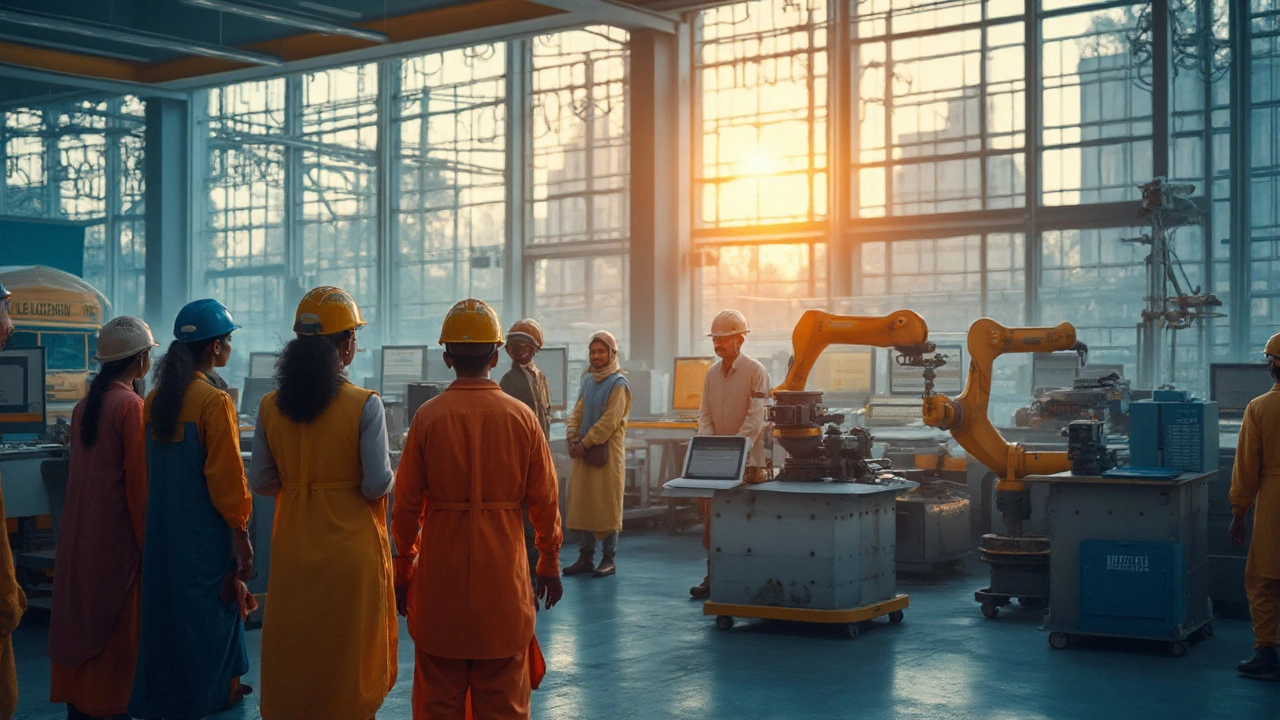- Why Small Scale Businesses Fail: Top Reasons Nobody Tells You Jun 23, 2025
- Furniture Import Costs from India: What You Really Pay Jun 18, 2025
- Which Metal Is the Strongest on Earth? - Facts for Steel Makers Oct 15, 2025
- Why Is Chinese Steel Cheaper Than US Steel? May 12, 2025
- Who is the World's Largest Chemical Manufacturer? - 2025 Update Oct 21, 2025
Economic Impact of Manufacturing: Boosting Jobs, GDP, and Growth
When you hear “manufacturing,” most people picture factories and assembly lines. What they often miss is how every bolt turned, every chip assembled, adds up to real money in the national budget and real jobs on the street.
Manufacturing’s Direct Contribution to the Economy
In India, the manufacturing sector accounts for roughly 17 % of the country’s GDP and employs more than 120 million people, according to the latest government data. Those numbers aren’t just stats—they mean millions of families have a steady paycheck and a chance to improve their living standards. The sector also attracts foreign direct investment, which brings in capital, technology, and management expertise that would otherwise stay abroad.
Because factories need raw materials, power, transport, and services, every rupee spent on production triggers a chain reaction. A plant that builds car parts, for instance, will buy steel from a local mill, hire electricians for wiring, and contract a logistics firm to move finished components. That ripple effect is why manufacturing is often called the “engine” of economic growth.
Spill‑over Benefits That Multiply the Value
Beyond direct output, manufacturing fuels innovation. When companies invest in automation or AI‑driven quality control, the know‑how spreads to smaller firms that supply parts or provide maintenance. This knowledge transfer raises productivity across the whole supply chain, which in turn drives down prices for consumers.
Exports are another big win. Items like textiles, automotive parts, and pharmaceuticals generated over $150 billion in export revenue last year. Those earnings strengthen the trade balance, stabilize the rupee, and create foreign‑exchange reserves that the government can use for infrastructure projects.
Regional development also follows the factory footprint. States with strong manufacturing hubs—such as Gujarat, Maharashtra, and Tamil Nadu—see faster urbanization, better road networks, and higher school enrollment rates. The government’s “Make in India” push builds on this pattern, encouraging new plants in tier‑2 cities to balance growth and reduce migration pressure on megacities.
If you’re a business leader, the data tells you where to invest. Prioritize areas with reliable power, skilled labor pools, and logistics corridors. Upskill your workforce with digital training; a modest 10 % increase in skill levels can lift productivity by a similar margin, according to the Confederation of Indian Industry.
Policymakers can amplify the impact by cutting red‑tape, offering tax incentives for green technology, and expanding credit lines for small‑scale manufacturers. Simple steps like streamlining customs clearance shave days off delivery times, making Indian goods more competitive globally.
Looking ahead, digital twins, 3‑D printing, and low‑carbon processes are reshaping the sector. Companies that adopt these tools can cut waste by up to 30 % and shorten product development cycles, giving them a clear edge in the next decade.
Bottom line: manufacturing does more than churn out products. It creates jobs, fuels GDP, drives exports, and pushes technology forward. Understanding these links helps companies, investors, and governments make smarter decisions that keep the growth engine humming.
How Manufacturing Helps American Society in 2025: Jobs, Innovation, Security, Community
- Aarav Sekhar
- Sep 11, 2025
Clear, current answer to how U.S. manufacturing benefits society-jobs, innovation, security, climate, and community-with data, checklists, and practical next steps.
